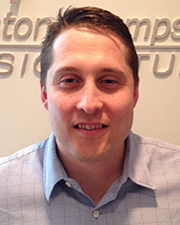


This past May, the city of Somerville, Mass. celebrated the long-awaited reopening of Conway Park with a ribbon cutting after a five-year remediation and renovation process.
The 2.8-acre park, one of the most heavily used recreation facilities in the city, is the site of a former 19th century bleachery and dye works that closed in the 1930s. Importantly, the site had also been abutted by a recycling operation that eventually closed. After the city took ownership of the property in the 1940s, it became a municipal ball field and was later renovated with the addition of a playground, most recently in 2001.
Following the city’s open space master planning effort, Conway Park was slated for further renovation and redevelopment with a synthetic turf field that could accommodate the high volume of demand. In December 2017, as part of its due diligence, the city evaluated a failing retaining wall and subsequently the soil behind it. The following March however, the park was immediately closed after additional soil testing revealed polychlorinated biphenyls (PCBs) and lead contamination due to its former site use, with some levels exceeding state regulatory limits, requiring reporting to both the state and U.S. EPA.

The detection of PCBs and lead presented an opportunity to remediate the site in conjunction with its redevelopment. The city hired Weston & Sampson, who had been providing Licensed Site Professional (LSP) services, and our landscape architects to round out the team to help them realize their vision of leveraging open space as an asset and transforming this former industrial site and playground into a multi-use green space for all to enjoy.
During the time between the park’s closure in 2018 and the start of a public design process in 2020, a thorough multi-media environmental sampling program was implemented to accurately determine the portions of the site that needed the most attention. For example, test pit excavations uncovered a wide variety of buried metallic objects and other debris.
Once the sampling and analysis phase was completed, the remedial planning and conceptual design process could begin. Long-term site remediation involved the excavation and off-site disposal of almost 9,000 tons of contaminated soil, followed by capping of the site to eliminate direct contact with any low-level contaminants.
The re-envisioned and reconstructed Conway Park included the installation of an updated multi-purpose synthetic turf field with an organic infill (which serves as the cap for the site), refurbishment of the playground, and new splash pad and community plaza space. The failing retaining wall was replaced, alleviating that safety concern, and a subsurface stormwater catchment system was added to mitigate stormwater overflow to and from Somerville Ave. The team also took the opportunity to refurbish the existing basketball courts, and a combination of significant public input and budgetary considerations guided the addition of other amenities. Carefully managing the earthwork and soil management within the limits of the park was one example of helping to keep the city’s costs down.
Existing trees in the plaza area were preserved to maintain a shady seating area for visitors, but the park also features 64 new native trees, native pollinator plantings, tables and seating, and permeable pavers at the splash pad to help mitigate water runoff. The existing playground was also refurbished, with new elements added for younger children.
At the ribbon cutting, Somerville mayor Katjana Ballantyne acknowledged the complexity of the project and the superb collaboration between local, state, and federal teams, stating “Conway Park is a vital amenity for so many in our community, and I am thrilled to invite everyone back to enjoy this space.”
The new vibrant park and playground are poised to better serve users today and withstand more extreme weather conditions due to climate change in the future. The new synthetic turf field facilitates drainage and stays cooler than rubber, the additional trees will provide relief from heat, and the stormwater infiltration system will be able to store the equivalent of a 2-inch rainstorm.
The takeaway here as we see it is that Brownfield redevelopment does not necessarily have to result in new office space or new housing. Open green spaces, designed and destined specifically for the common good, speak just as well to our loftiest ideals of community well-being and should always be on the short list of potential redevelopment options. And they also help prop up property values in the surrounding neighborhood.
But of course, this project, like so many others of its type, was the beneficiary of a collaborative effort between several public and private organizations to mitigate project costs. Such efforts are essential to maximizing every dollar in a strategic way to benefit not only the project itself but the broader community.
George Naslas, PG, LSP is a vice president and environmental practice leader at Weston & Sampson in Reading. Brandon Kunkel, RLA is a landscape architecture practice leader at Weston & Sampson’s design studio in Boston.
Dartmouth, MA According to PREIT, Dartmouth Mall, the dominant enclosed retail destination in Southeastern Mass., will welcome the region’s first Boot Barn this fall. The nearly 15,000 s/f western and work wear retailer



